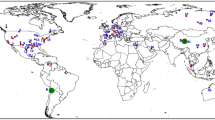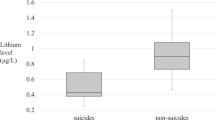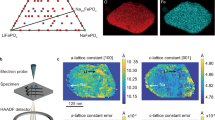Abstract
A KNOWLEDGE of the relative abundances of the alkali metals observed in twilight should shed light on the problem of their origin. Lytle and Hunten1 were unable to detect potassium, and set a limit of at least 30 on the ratio sodium/potassium., favouring an origin from sea-water. Our recent measurement2 of 8,000 for the ratio sodium/lithium falls between the values for meteorites and sea-water, suggesting that the lithium, at least, comes primarily from the former. Junge, Oldenberg and Wasson3 have discussed the meteoric and marine hypothesis, and concluded that the former is much more probable. We have now been able to measure the abundance of potassium and find that the ratio sodium/potassium agrees almost exactly with the value in sea-water.
This is a preview of subscription content, access via your institution
Access options
Subscribe to this journal
Receive 51 print issues and online access
$199.00 per year
only $3.90 per issue
Buy this article
- Purchase on SpringerLink
- Instant access to full article PDF
Prices may be subject to local taxes which are calculated during checkout
Similar content being viewed by others
References
Lytle, E. A., and Hunten, D. M., J. Atm. Terr. Phys., 16, 236 (1959).
Sullivan, H. M., and Hunten, D. M., Nature, 193, 1064 (1962).
Junge, C. E., Oldenberg, O., and Wasson, J. T., J. Geophys. Res., 67, 1027 (1962).
Marmo, F. F., Pressman, J., and Aschenbrand, L. M., Planet. Space Sci., 1, 291 (1959).
Author information
Authors and Affiliations
Rights and permissions
About this article
Cite this article
SULLIVAN, H., HUNTEN, D. Relative Abundance of Lithium, Sodium and Potassium in the Upper Atmosphere. Nature 195, 589–590 (1962). https://doi.org/10.1038/195589a0
Issue date:
DOI: https://doi.org/10.1038/195589a0



